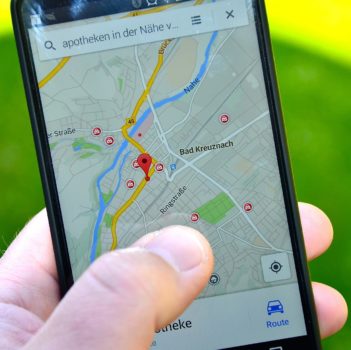OOH – Harnessing the Power of Audience Location Intelligence
by on 3rd May 2017 in News

Geolocation data continues to become more accurate and reliable, giving advertisers the best opportunity to reach audiences in real time with extremely targeted messaging. Writing exclusively for ExchangeWire, Kym Frank (pictured below), President, Geopath, talks about how measurement, optimisation, and attribution will be key to the growth of the OOH industry.
In the past, the out-of-home (OOH) industry was considered difficult to measure, lacking access to the type of big data that the internet was able to generate about audiences. All of that is changing. In fact, the surge of geolocation data harnessed from sources such as carrier data, mobile ad networks, GPS, mapping apps, sensors, beacons, and beyond, empowers the out-of-home industry to meet and, in some cases, exceed the measurement of other advertising channels. OOH is in a position to not only be authorities in their medium alone, but to be leading experts in
audience location intelligence.
Geolocation data is currently being used in a variety of innovative ways within the OOH ecosystem.
Audience Targeting
Geolocation data empowers the OOH ecosystem to understand what kind of people can be best reached in what locations, and when. This goes far beyond the simple age and demographic information of the past, with more sophisticated targeting based on behavioural information like amount spent at fast food restaurants, plans to enroll in a university, and likelihood to be in the market for a new car.
Measurement
Geopath, the not-for-profit organisation that provides the standard currency for the OOH industry, is migrating from their legacy measurement system to a new, state-of-the-art, methodology in partnership with Streetlytics. Utilising data from millions of mobile devices, connected cars, and GPS systems, Geopath’s new methodology, MORE, goes beyond simply measuring OOH inventory. The new focus is on measuring the aggregated, anonymous movement of the entire US population throughout the day, whether or not they are exposed to an advertisement.
Creative Optimisation

Kym Frank, President, Geopath
Audience location intelligence garnered from multiple providers in the space is also empowering creative optimisation in a number of ways. For printed units, creative can be tailored to reach the audience most prevalent in the vicinity of the advertisement with the most relevant messages. For digital out-of-home, creative can be changed in real time. In some instances, the creative is changed based on the devices in the viewable area of the inventory. In other instances, the creative is changed based on the speed of the traffic moving by the inventory. If traffic is moving quickly, and audiences will only have a few moments to be exposed, advertisers may choose to show a brief message. If traffic is at a standstill, audiences have a longer time in front of the inventory and advertisers may choose to show a longer message.
Mobile Retargeting
OOH advertising works fabulously in partnership with mobile advertising – both platforms reach individuals while they are on the go. Many OOH media companies are offering mobile extension programs where advertisers can identify individuals who are exposed to their OOH ads and then retarget them with an advertisement delivered directly to their mobile device. For example, advertisers are taking advantage of this and utilising social media platforms, due to their popularity to target a wider audience.
Attribution
Measuring the effectiveness of advertising spend is truly the Holy Grail of all marketers. OOH is in a position to prove the impact of the platform in all new ways – thanks to audience location intelligence. Several companies have offerings that passively identify individuals who are exposed to OOH advertising and then measure whether that exposure led to a lift in a brand’s key performance indicators (KPI). These KPIs may include a passively captured visit to a retail location by an individual who hasn’t visited that location in the past; or exposed and control groups may be surveyed to identify lifts in brand awareness or purchase intent.
Access to these new data sets is proliferating across all verticals of the marketing landscape. It is important to note, however, that understanding the volume, precision, accuracy, and persistence of data delivery of the various types of geolocation is vital. A recent Forbes article indicated that up to 90% of mobile ad location data is wrong. Each type of geolocation data has its strengths and weaknesses. Avoid falling into the trap of the old adage: “If all you have is a hammer, everything looks like a nail.”
As the exponential access to geolocation continues, and data becomes more precise and reliable, OOH is likely to continue to develop new, innovative ways to use the information – solidifying themselves as the experts in audience location intelligence.
According to the Outdoor Advertising Association of America (OAAA), OOH advertising revenue reached historic highs last year, achieving 27 consecutive quarters of growth since the recession. And why not? OOH advertising doesn’t suffer from bots, fraud, fragmentation, and it can’t be blocked like other channels. Digitisation has been a struggle for other 'traditional' advertising platforms, but the OOH industry thrives on it.
The addition of the insights derived from the responsible use of geolocation data will only further the success of the OOH industry.








Follow ExchangeWire